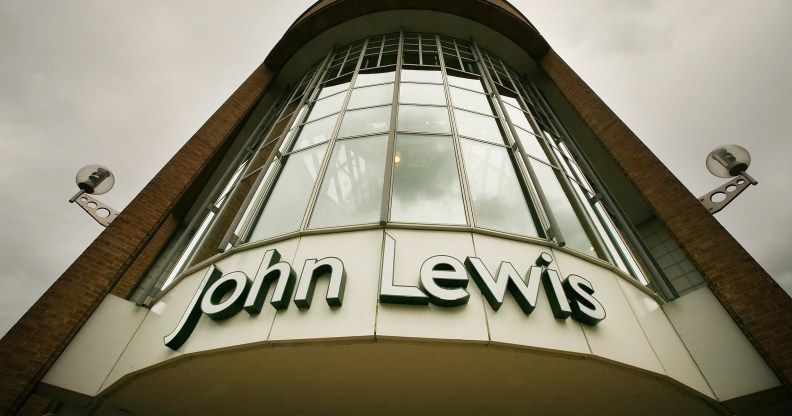‘Feminist’ thinks John Lewis ‘hates women’ because it allows people to choose a changing room that matches their gender

John Lewis allows customers to use the changing rooms that make them the “most comfortable”. (Peter Macdiarmid/Getty)
A self-described “feminist” has said she thinks John Lewis “hates women” because it allows customers to use “whichever fitting room makes them feel the most comfortable”.
Jean Hatchet decided to visit a Sheffield branch of John Lewis to ask staff questions about the department store’s policy on gendered changing rooms.
Hatchet reported on Twitter that many of the staff seemed confused about the company’s policy, with some saying that entry to a gendered changing room depended on what the person looked or sounded like.
She later contacted John Lewis by email to ask for a clarification on its policy.
Hatchet posted the response she received on Twitter, which read: “As an inclusive business, our policy states that customers are welcome to use whichever fitting room makes them feel the most comfortable.
“As a co-owned business, we empower our partners to use their own judgement on how this policy should be applied on a case-by-case basis.
“Regardless of specific policy, if a customer were to act inappropriately, the necessary action would be taken.”
When posting the response from John Lewis, Hatchet also wrote: “They will let men in female changing rooms. That’s that. No debate. Why do all these stores hate women?”
Finally heard from John Lewis. They will let men in female changing rooms. That’s that. No debate. Why do all these stores hate women? @jlandpartners pic.twitter.com/PbHRlDzEWY
— Jean Hatchet (@JeanHatchet) November 15, 2019
She also told Metro: “For men the changing rooms are a tiny bite of the tempting cake that is women’s rights.
“What people aren’t seeing is that this leads to men in female prisons, hospital wards, domestic violence refuges etc and women need to have no fear or shame in saying no to the assault on their rights.”
Last year, an anti-trans group admitted that it had “concocted” the “bathroom predator” myth, the idea that sexual assaults will increase if trans people are allowed to use single-sex spaces, as a fear-mongering tactic.
Research has found that there is no evidence for the claim that allowing transgender people to use the public facility of their choice would increase violations of privacy and crime.
The Equality Act 2010 protects trans people from discrimination in areas including employment, education and the provision of services.
A guide on “providing services for transgender customers” produced by the government in 2015 states: “Direct discrimination occurs where a person is treated less favourably than other people because of a protected characteristic such as gender reassignment or sex.”
It explicitly gives the example of “refusing to allow a woman to use female facilities because staff perceive her to be male”.
However it also states that asking someone to “confirm” their legal gender with a driving license or birth certificate if “necessary” is allowed in some cases.
This points to the need for Gender Recognition Act (GRA) reform, as unless trans people have obtained a Gender Recognition Certificate – an arduous process that a tiny fraction of the trans population have gone through with, and which is not available to non-binary people – then their “legally defined sex” is the gender they were assigned at birth.
Previously, clothing stores such as Primark, Urban Outfitters and Marks and Spencer have been criticised for turning trans people away from their changing room of choice.

